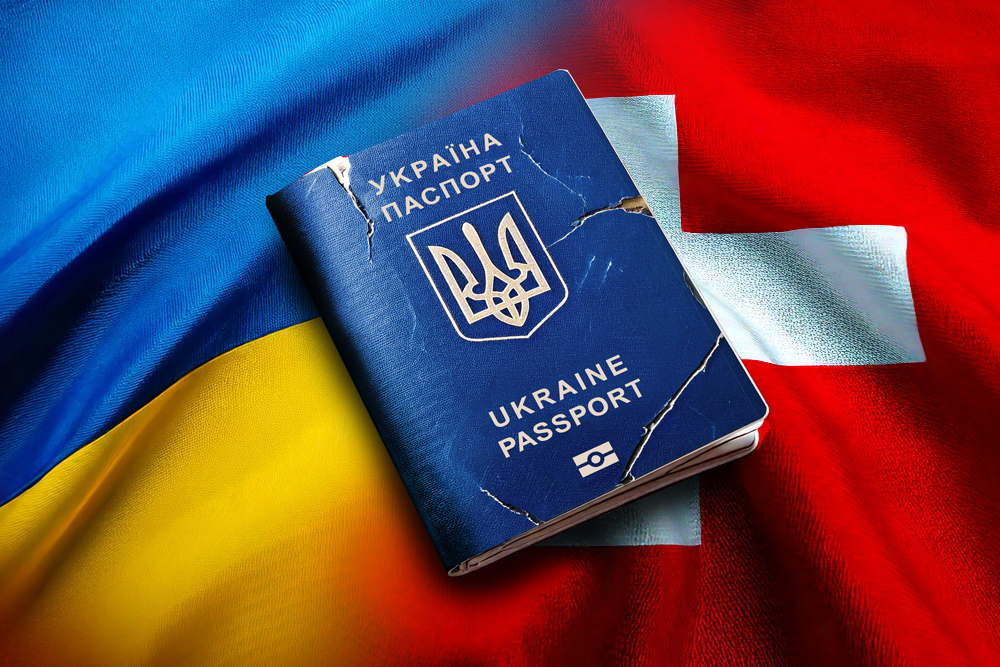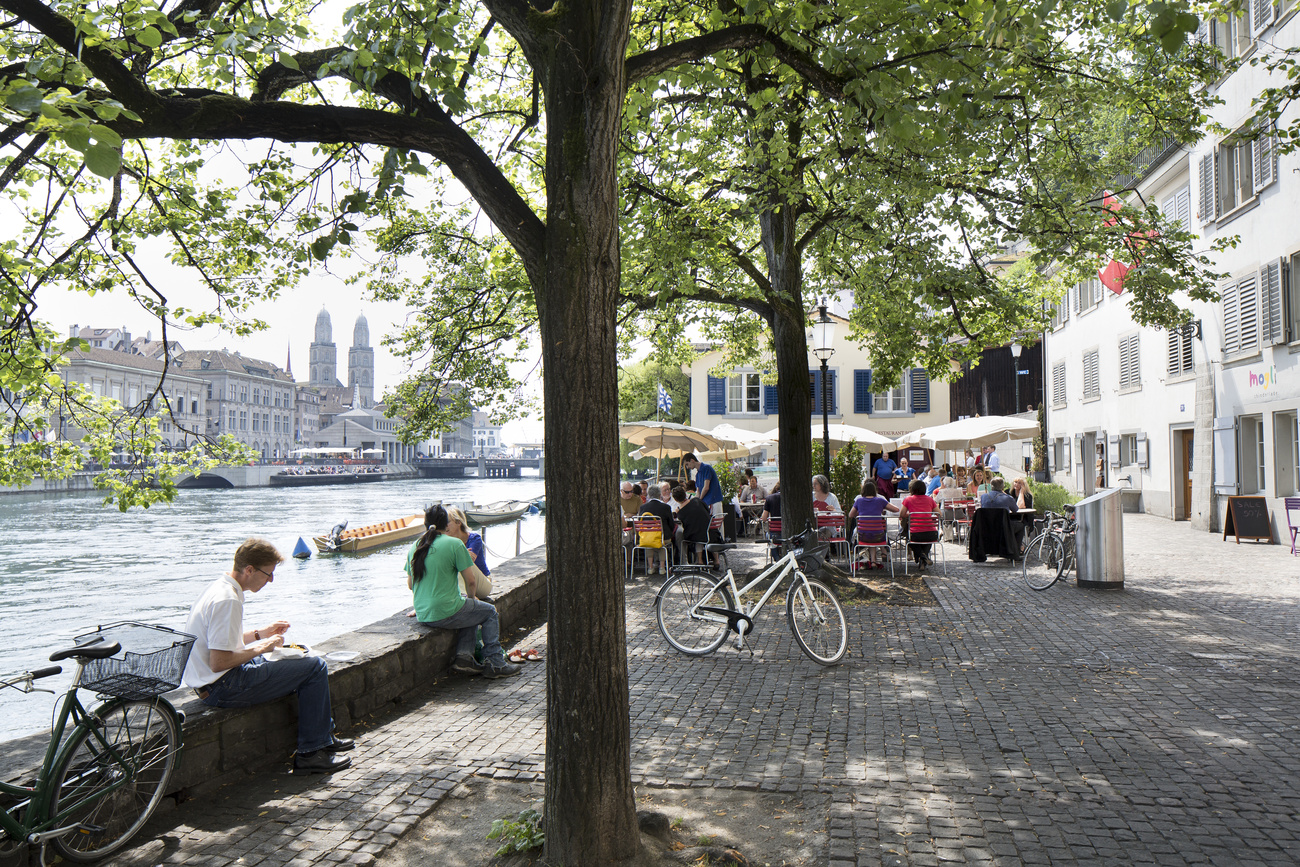Behind the scenes in Berne

Berne's medieval old town, with its fountains topped with statues and kilometres of arcades, is one of the most photographed in Switzerland. Dale Bechtel takes a behind the scenes look at the people and stories that bring the town and its past alive.
Nicolas Kyramarios sets up his camera in the old town of Berne. It’s a special camera, which takes 360-degree photographs. The pictures will form part of a virtual tour of the old town on CD Rom.
“The photographs will allow you to go along Metzgergasschen or up Brunngasse, or you can go down there to that fountain,” says Kyramarios, who is also taking pictures inside some of the houses to better provide a behind the scenes look at the town.
Most visitors to the city see the bear pit, the clock tower, the fountains and their statues. If you follow Kyramarios and his camera, you could find yourself inside the house at Brunngasse 17, to hear the story of one of Berne’s most colourful characters, a simple hairdresser who’s comic talents have made him a legend.
The more often you walk through the cobblestone streets, the more the town reveals itself. Martin Fröhlich knows the old town better than anyone. He’s a resident and historian, who would like to rewrite most of the guidebooks about Berne.
He shows me around, and begins by debunking a popular myth about how the city got its name. Berne is commonly thought to be a corruption of “Bären” – the German word for “bears”.
Not so, says Fröhlich. “The founders took the name of an old Italian city, in the same way that New York is named after the old English city, York,” he explains. “The Italian city in question was Verona. So ‘Berne’ is nothing more than Verona on the north side of the Alps. And has nothing to do with bears.”
As we walk, he takes me off the tourist track, to places I’ve been before, but never really noticed. A little way along from the famous bear pit is the Nydegg churchyard. “Most people in Berne and visitors to the city think about bears, the bear pit, and they know the clock tower,” says Fröhlich. “But nobody comes to this wonderful place.”
It’s a tranquil open square, which is surprising since it’s situated just below a busy bridge leading into the town. There’s not much to see, but Fröhlich shows me a well. He says it’s all that remains of the Nydegg castle, which once stood on the site of the Nydegg church.
On the nearby river banks, Fröhlich explains, were the town’s mills. The wheels that ground the wheat into flour were powered by the town’s sewage, which flowed to the mills through a series of canals.
“So the people’s bread was made by the sewage,” laughs Fröhlich.
Back in Brunngasse, Kyramarios is preparing his next picture, and doing a little tidying up by removing a rubbish bag.
“I took it away because it was just in front of the camera, but I can’t clean up the street or the whole town for these pictures.”
He also has to deal with delivery trucks littering his camera frame. He says they are only a minor nuisance. He’s more than happy Berne is not just a museum piece.
Its arcades are lined with shops, carpet sellers, bakeries, restaurants and cafes. In the shadow of the cathedral spire, people sell fresh vegetables, meat and handicrafts from market stalls.
The spire itself is home to Ivo Zurkinder. “Yes, the bells are loud. But they only chime four times a day and I like church bells, so it doesn’t bother me,” he says.
Zurkinder and his partner are the keepers of the tower, and are thought to be the only ones in the profession who actually live in a spire. It’s more than 300 steps up to the platform overlooking the city and that’s where Zurkinder is waiting for me.
“I’m a Catholic living in a Protestant church,” he smiles.
He and his partner answered a newspaper advertisement and took up the post at the beginning of the year. They hope to stay at least 10 years, despite such simple problems as getting out of the front door.
“Shopping means down the steps, and back up again. If we forget something we have to go down a second time. Usually though, I have to go down anyway after my five o’clock rounds, so I take a shopping bag with me.”
One shop catering to the needs of the old town residents is the Vini Cappelletti on Gerechtigkeitsgasse or Justice Street. This is where Fröhlich does much of his shopping. It’s not necessarily the variety of goods or large assortment of wines that attract him, but the personal service provided by the shopkeeper.
“Wines here fall into two categories: ‘where’ wines and ‘what for’ wines,” Fröhlich explains. “the reason is because Mrs Cappelletti, the owner of the store, was once asked by a customer what he should serve with the wine he was buying.
“She replied: ‘don’t ask me what you should serve with the wine, ask me where you should drink it’. The customer said: ‘where, then?’, and she said ‘close to your bed because the wine is really heavy’.”
Fröhlich takes me down an alley leading away from Gerechtigkeitsgasse. We come to Junkerngasse or Nobility Street. The stately buildings that line this street now belong to the city and federal governments.
Fröhlich points to a house with its shutters closed. It’s owned by the federal administration but it’s one of two houses that used to belong to a prominent Bernese family, the von Wattenwyls. Fröhlich tells me it’s haunted.
“I know there’s one ghost – at least one,” he says, as he turns the doorknob to find it locked.
“The von Wattenwyl servants lived in the house and there were stables in it. But it’s the only house in the old town that isn’t long enough to reach the canals, so there are no facilities in it. Only ghosts can live in this house.”
He says any attempts to have it renovated and turned into apartments have failed since everyone knows it belongs to ghosts.
It’s a story not mentioned in any of Berne’s official tourist brochures. There’s also nothing about the town’s shop-owners, hairdressers or the keepers of the spire.
by Dale Bechtel

In compliance with the JTI standards
More: SWI swissinfo.ch certified by the Journalism Trust Initiative









You can find an overview of ongoing debates with our journalists here . Please join us!
If you want to start a conversation about a topic raised in this article or want to report factual errors, email us at english@swissinfo.ch.